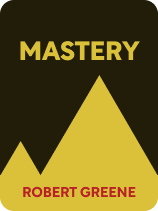

This article is an excerpt from the Shortform book guide to "Mastery" by Robert Greene. Shortform has the world's best summaries and analyses of books you should be reading.
Like this article? Sign up for a free trial here .
What kind of work do you feel drawn to? Do you sense an inner force guiding you in your pursuits?
Author Robert Greene believes that we all have something inside us that pulls us in certain directions in life. You can get in touch with that force by performing three tasks: reflecting on your childhood, blurring the line between work and life, and embracing a nonlinear path.
Keep reading to learn how to find your calling in life.
How to Find Your Calling in Life
Greene explains that, throughout history, masters have referred to an inner force that guided their work. We can refer to this as our calling. Whatever we call it, we all have this sense of direction within us. It’s why you feel drawn to some things but not others—music or math, academia or entrepreneurship.
(Shortform note: In The Art of Learning, Josh Waitzkin describes this phenomenon as a deep feeling of rightness or “resonance” with the discipline that calls you. Writing of his first encounter with chess, he recounts a visceral, almost psychic pull toward the streetside boards he saw in New York City. From this natural inclination, Waitzkin explains, your personal style emerges—the natural, intuitive way in which you approach the skill—and honoring it is crucial to reaching excellence.)
Mastery outlines how to find your calling in life. By acting according to your inner sense of direction, you’ll develop your creative potential and strive toward mastery. According to Greene, everything will naturally fall into place as you follow that inner force. Get in touch with it by performing three tasks:
Task #1: Reflect on your childhood. According to Greene, we feel the inner voice most strongly in childhood, but we often lose touch with it. Think back to what you loved to do, and consider what’s unique about you—such as your personality quirks, core character traits, or unusual hobbies. This will start to reawaken your inner voice.
Task #2: Blur the line between work and life. Whatever work you’re drawn to, choose to view it as integral to who you are. Greene explains that in the past, people saw work and life as one vocation: a craft or discipline that was both practical and spiritually fulfilling. For example, a blacksmith would’ve made a living from his craft while also drawing meaning from the work.
Task #3: Embrace a nonlinear path. The path to mastery is long and winding, Greene says. You won’t find the perfect path right from the start, but if you persevere and follow your inner sense of direction, the right opportunities will come your way.
| Are There Age Limits to Mastery? While Greene argues that you can start the journey to mastery at any age, he also contradicts himself with some of his examples. For instance, Mozart began his musical training at the age of 4—and without such an early start, he might not have reached the heights he did. Further, Greene states that the most exceptional masters felt an intense calling since early childhood, which would contradict his assertion that you can find it whenever and still become a master. However, this doesn’t mean that you can’t pursue mastery at a later age—just that, depending on the field, chances are slim that you’ll become world-class. You don’t need fame to be happy, though—as George Leonard puts it in Mastery: The Keys to Success and Long-Term Fulfillment, fulfillment comes not from fame, recognition, or rewards, but from the labor of love that is consistent, diligent practice. In Why We Make Things and Why It Matters, Peter Korn supports this: A lifelong carpenter and furniture maker, Korn frequently teaches middle-aged and elderly people his craft, and he says that many find meaning in the simple, meticulous effort of it. |
Exercise: Find Your Calling
Greene asserts that the first step to mastery is to look within. Take a moment to reflect and search for your inner sense of direction.
- What were you naturally drawn to as a child? Describe this with specific detail (for example, maybe you always found yourself playing sports with the neighborhood kids).
- What unusual or characteristic personality traits do you have? Think of that thing people always notice about you—for instance, maybe you always love to make people feel welcome. Consider a few, and describe which feels the most salient to you.
- What do you feel drawn to as an adult? Consider the activities you can’t get enough of—maybe cooking or hiking. How might this relate to your childhood interests?
- Considering the above answers, ask: Have you lost touch with what interests you most? If so, how might you bring it back into your life? For example, think about making time to practice a skill you’ve always been drawn to, like playing the piano or developing a habit you’ve long felt you should.

———End of Preview———
Like what you just read? Read the rest of the world's best book summary and analysis of Robert Greene's "Mastery" at Shortform .
Here's what you'll find in our full Mastery summary :
- The clear path anyone can follow to achieve mastery
- An explanation of the three stages of mastery
- How learned conventions and familiar ways of thinking reduce creativity






